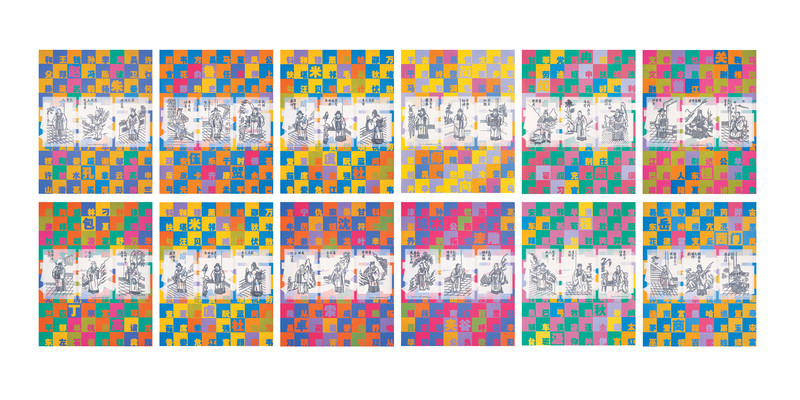WEI GUANGQING 魏光庆
b. 1963, works and lives in Wuhan

Current And Upcoming Exhibitions:
A Grain of Wheat: The 1980s Contemporary Art Memorial Exhibition,
Ui Art Museum, Suzhou,
09.19, 2025
- 03.01, 2026
Introduction
Wei Guangqing was born in Huanshi, Hubei province in 1963. He graduated from Zhejiang Academy of Fine Arts, Department of the oil painting of in 1985. He resides and works in Wuhan. Selected exhibitions include: China Expression, Ke Art Museum, Shanghai (2019); Metamorphosis: Huang Zhuan Memorial Invitational Exhibition, OCAT Shenzhen, Shenzhen (2017); Wei Guqngqing: Plus or Minus Zero, Hubei Museum of Art, Wuhan (2015); Re-History, Chinese Contemporary Art Invitation Exhibition, Hubei Museum of Art, Wuhan (2012); Old Scriptures, Wei Guangqing Solo Exhibition, ShanghART H-Space, Shanghai (2008); Zuo Tu You Shi, Wei Guangqing's Art Exhibition, He Xiangning Art Museum, Shenzhen (2007); 85 New Wave - The Birth of Chinese Contemporary Art, Ullens Center for Contemporary Art, Beijing (2007); Made in China–the Paintings of Wei Guangqing, ShanghART Gallery, Shanghai (2005), China–Contemporary Painting, Fondazioni Cassa di Risparmio, Bologna (2005), Mahjong, Kunstmuseum Bern (2005) and First Triennale of Chinese Art, Guangzhou Art Museum, Guangzhou (2002).The Red Wall is a visual motif that has appeared throughout Wei Guangqing's work since the '80s. Here, he extends the practice of the double-take by encouraging the viewer to look again and reconsider familiar narratives and styles of images. The series "Red Wall" takes as its point of departure the Chinese moral classics; the virtuous words and feudal maxims of ethical and moral doctrines.
Appropriating these ancient illustrated books, he replaces the original text with the dominant visual symbol of a red wall, maintaining only the original illustrations and manipulating them with the flat pastiche technique of pop art. The red wall becomes the commanding feature in the basic composition and serves as a new projection screen for a new social order and new moral standards. The representation of the wall plays on the various connotations that this symbol embraces: a border, inclusion and exclusion, and protection from foreign intruders and influence. The deceivingly simple work draws on ancient Eastern philosophy while borrowing Western pop aesthetics. The wall becomes an ambiguous symbol because it is distanced from the nation it purportedly serves. In subverting the ancient classics, Wei Guangqing does not fully abandon tradition but reminds viewers to recognize their entwined meaning in mainstream contemporary culture–in consumerism, politics, and religion.
By combining opposing concepts such as past and present, the figurative and the abstract, he represents these as fluid, heterogeneous concepts that cannot be viewed in isolation. Wei Guangqing employs references to historical philosophy and post-modern pastiche of different visual images. With no immediate way to decode these cultural compilations, Wei Guangqing's paintings work like informative fragments with no easy way out.

